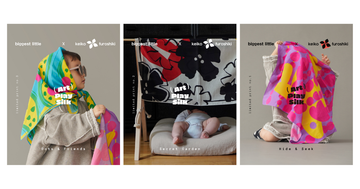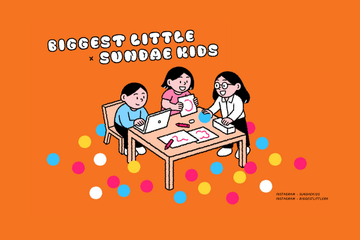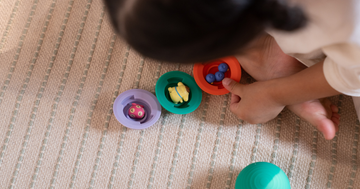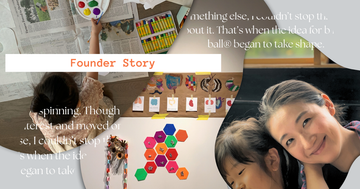Practical Tips for Integrating Open-Ended Play at Home
Now that we've explored the transformative power of open-ended play and the necessary mindset shift for parents in Part 1 of this series, let's dive into four practical tips for integrating open-ended play into your home. We'll also discuss what to look out for and reveal some of our essential material choices for open-ended play.
1. Create a Safe Environment and Safe Toys for Free Play
Ensure the play area is safe and that the toys are age-appropriate. When we say "age-appropriate," we're not strictly referring to matching toys to a specific age range, like 13-19 months for an 18-month-old. It's more about considering specific factors, such as ensuring there are no small objects within reach if you have a mouthing baby. Addressing safety concerns is the first step in helping parents let go of control.
This is part of the reason why we make sure b is for ball® meets the highest safety standards and complies with regulations for the youngest age group (0+), we aim to make it as safe as possible for exploration, providing a toy that can grow with them.
2. Step Back and Observe
As parents, it’s natural to want to guide and correct our children. However, in open-ended play, it’s crucial to step back. Even if your child is using toys in unconventional ways, refrain from commenting or “correcting” them as long as they are safe. This allows them to explore their creativity without fear of judgment.
3. Be Open-Minded and Observant
Take the time to observe how your child plays, noting their unique style and interests. Instead of positioning yourself as a coach, try being a spectator on the sidelines. By understanding their play patterns, you can better support their explorations and learn to follow their lead. Appreciate the beauty in their pure, unconditioned perspective on objects and the world around them. As Dr. Shefali mentioned (referred to Part 1 of our series) , children’s minds are free from the restraints and conditioning we often have. Recognize that their unfiltered creativity might offer insights and inspirations beyond our own, and admire that difference!
4. Join in Occasionally
While it’s crucial to grant children the freedom to play independently, occasionally participating and immersing yourself in their play can be super fun. Try to see things from their perspective! This not only deepens your connection but also unveils the magic and excitement of their imaginative realm. Loosen up and relish in the absence of structure, and you will find unstructured play surprisingly rewarding as well! Look at what this parent-child team has discovered—they use b is for ball® to suck up the flash card and drop it in the Learn & Drop box from our friend Solobo Toys! How creative and amazing! (Click to view the full video)
Our Top Choices for Open-Ended Playtime
Incorporate open-ended play into your daily routine by providing a variety of materials and opportunities for free exploration.
- Natural objects like sticks, stones, and leaves can become tools for imaginative play.
- Natural materials like water, sand, and clay provide both sensory experiences and creative mediums.
- Art supplies such as crayons, paints, and paper allow for endless creative expression.
- Toys that encourage open-ended play, such as b is for ball®, which can evolve with a child’s growing milestones, blocks and Magna-Tiles that can be built into various structures, and wooden toys like Learn & Drop that can be played dynamically to help advance multiple skills. Even household items like cardboard boxes and recycled materials can spark creativity!
We hope this 2-part series has provided valuable insights into the benefits of embracing open-ended play. By incorporating these practices, we believe you'll be giving your children an invaluable gift—the freedom to explore, imagine, and create without boundaries.






